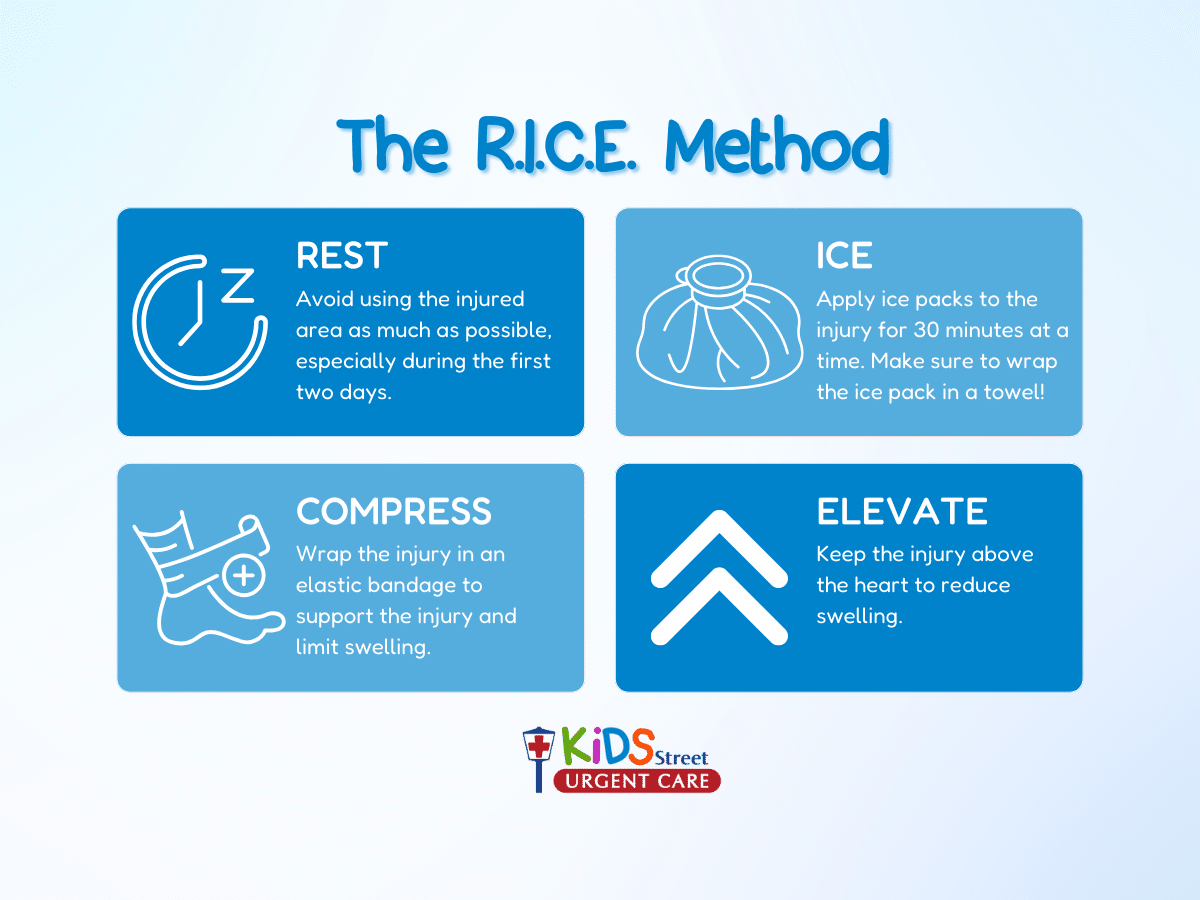Twists and sprains in kids are a common occurrence, especially if your kiddos are active or play sports! KidsStreet Urgent Care has all the details on twists, sprains and strains in kids plus how to diagnose and treat them.
Knowing The Difference: Twists, Strains and Sprains
Twists, strains and sprains in kids are among the most common sports injuries. All three injuries have similar symptoms, but they need to be treated a little differently. Let’s take a look at distinguishing the three!
What is a Twist?
Twists occur when an extremity gets twisted unexpectedly. Most cases are not serious but should be monitored for a few days to ensure the injury heals. In severe cases, twists can lead to a broken bone.
Twists happen suddenly, and your child will generally only feel pain around the injury site.
Symptoms of twists in kids include:
- Pain and swelling
- Difficulty moving the injured area
- Mild heat coming from the injury
- Difficulty walking
- Tingling or numbness in the affected area
- Redness or bruising around the injury
What is a Sprain?
A sprain is an injury caused by the sudden twisting, tearing or stretching of a ligament, which attaches bones to other bones. These injuries are most commonly seen in the ankles, knees and wrists.
Sprains typically have a “popping” sensation at the time of injury. If your child experienced this, they are likely facing a sprain rather than a twist or strain.
Symptoms of a sprain include:
- Pain and swelling
- Mild bruising
- Tenderness around the area
- Difficulty moving the area or walking in the case of ankle sprains
What is a Strain?
A strain is an injury to a muscle or tendon, which attaches muscles to bone. Strained muscles and tendons have been pulled too much, typically from overuse. Since strains are overuse injuries, they typically develop over longer time periods.
KidsStreet recommends that your children rest from physical activities and sports a few times a week to help avoid strains.
Strain symptoms include:
- Pain and swelling
- Bruising
- General tenderness
- Muscle spasms, cramps and weakness
- Limited movement in the affected area
How To Know If It’s Serious
Most of these injuries are minor and will heal in a matter of days or weeks, but you should watch out for more severe symptoms. Your child’s twist, sprain or strain could be serious if:
- Intense bruising occurs.
- They cannot move or put weight on the affected area.
- Swelling doesn’t go down with medication.
- The injury does not heal within a week.
How Are They Diagnosed?
If you are unable to diagnose minor strains, sprains or twists at home, you may need to seek medical help. Pediatric providers will observe your child’s symptoms and injury to make a diagnosis. They may also use one of the following methods:
- X-Ray to rule out possible broken bones.
- MRI to look at images of internal tissues.
- CT Scan to get a better look at internal structures.
Treating Sprains, Twists, and Strains in Kids
You can treat minor twists, sprains and strains at home with the RICE method. RICE stands for rest, ice, compression and elevation.

We recommend supplementing this with over-the-counter pain medicines such as ibuprofen to reduce swelling and pain.
Your child’s provider may advise the following as well:
- Using a wheelchair or crutches to take pressure off the affected area
- Using a splint or walking boot for support and stability
- Reducing movement in the area for a few days
Having trouble treating your little one’s injury? KidsStreet can help! We diagnose and treat twists, sprains and strains in our kids urgent care services.

Turn to KidsStreet Urgent Care
Whether you’re a kid or a parent, twists, sprains and strains are no fun to deal with. KidsStreet Urgent Care can help your kiddo heal and feel better, while providing the peace of mind you need as a parent.
To visit one of our child-focused urgent care clinics, register online. You will be able to wait from home or in your vehicle until we’re ready to see you. We’ll send you a text when it’s time to head to the clinic!
KidsStreet loves walk-ins! We recommend registering online ahead of your visit as it reduces in-clinic wait times. Walk-ins join the same queue as those who register online.
